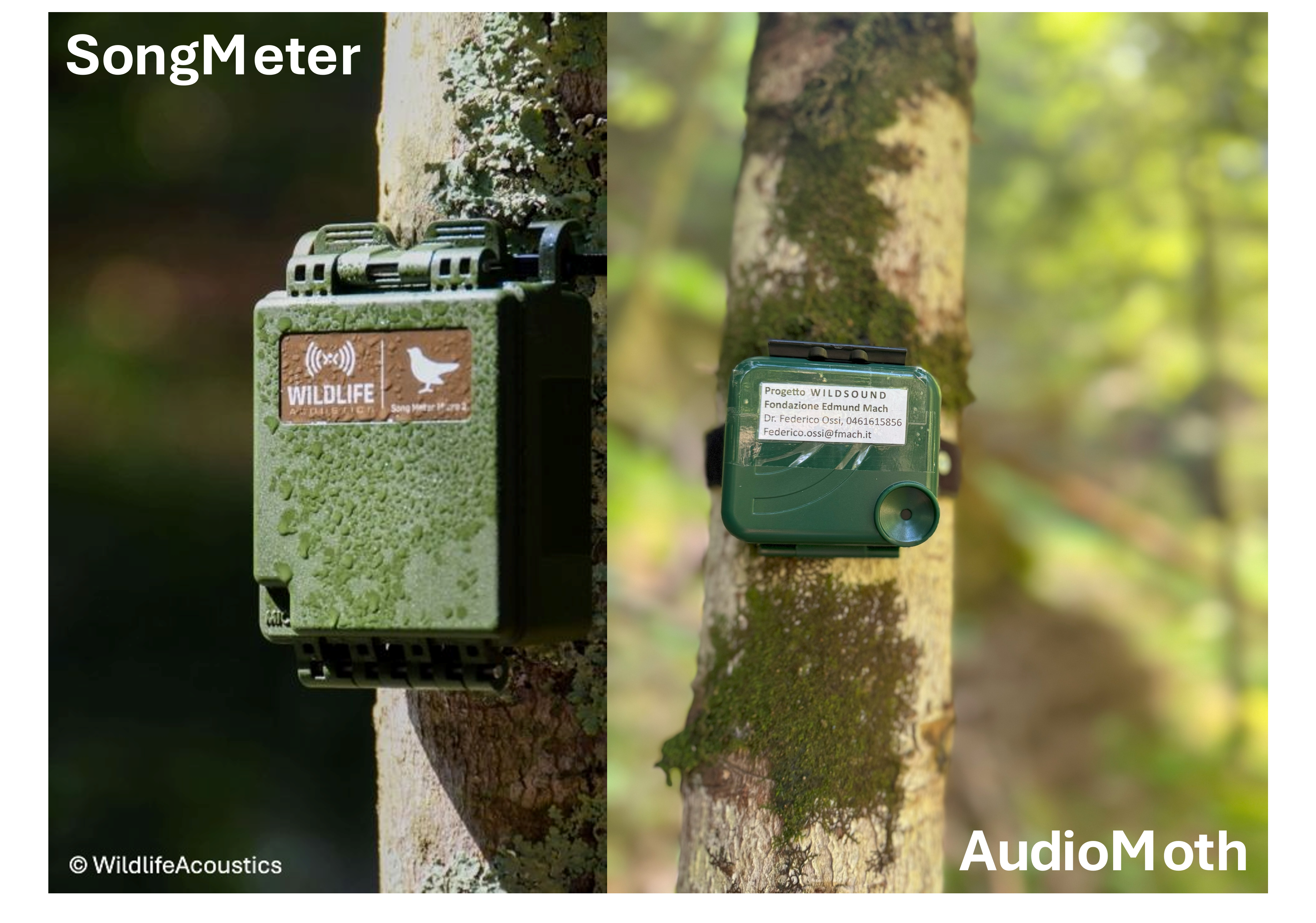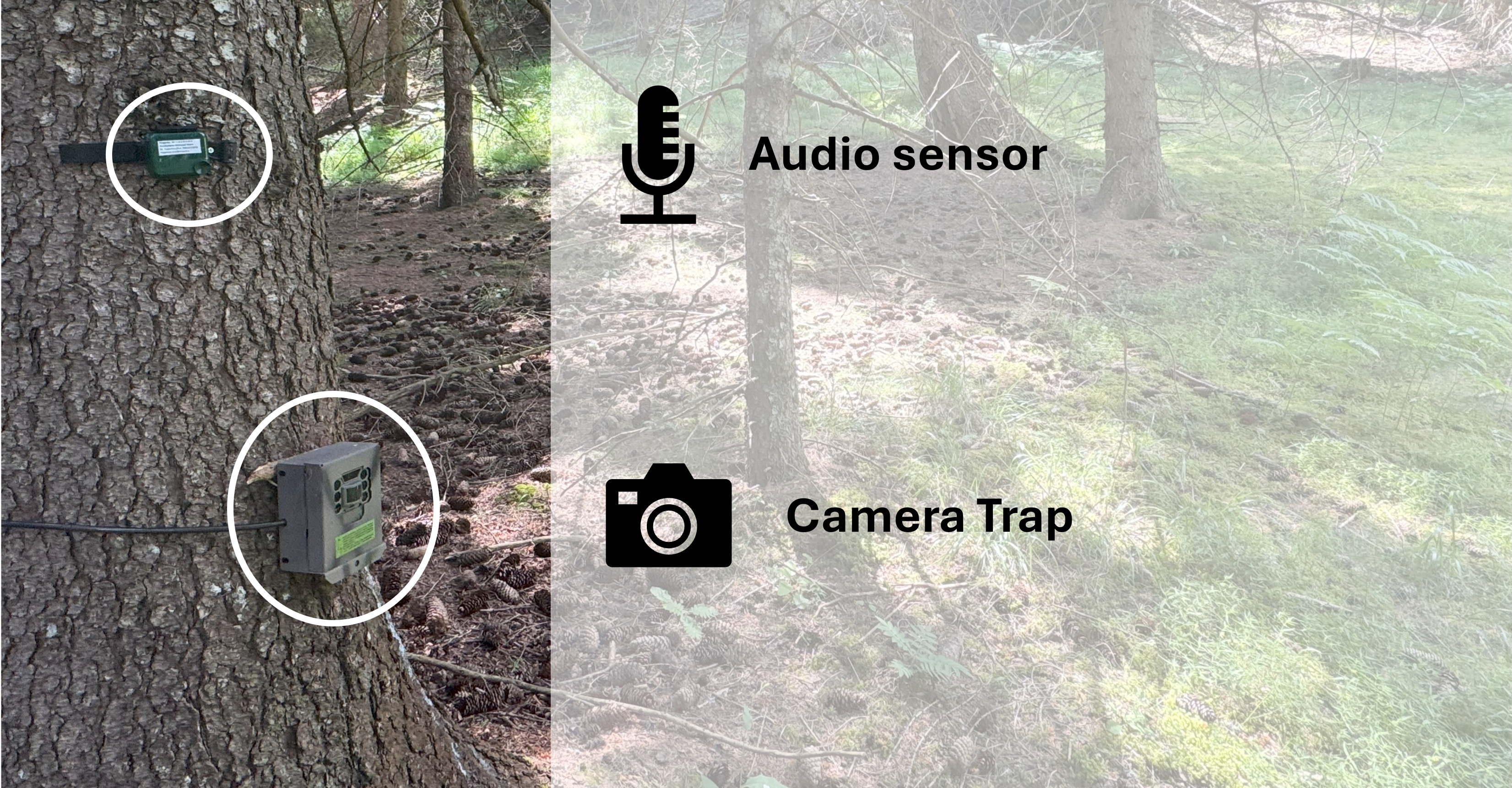The WildSOUND project aims to investigate the impact of human-generated noise on the Alpine ecosystem. The research is structured around four main components:
Soundscape monitoring
We will deploy acoustic recorders in four areas across Trentino-Alto Adige and Lombardy: Val di Non, Val di Peio, Valle del Tonale, and Valfurva. These locations differ in their exposure to human disturbance. The sound data we collect will be compared with information about human presence, such as proximity to urban centers, roads, and the intensity of outdoor activities like hiking and mountain biking.

Wildlife monitoring
The acoustic sensors will be placed in areas already monitored using camera traps. These have been used for several years to study the presence of deer, chamois, and roe deer (see the work conducted by the Unite of Animal Ecology of the Edmund Mach Foundation). This integrated approach will allow us to assess whether noise levels influence the use of space by these species.

Here’s an example of the video captured by camera traps:
Physiological impacts
To understand potential physiological effects of noise exposure, we will compare GPS collar movement data and stress levels (measured through fecal sample analysis) across areas with different levels of anthropogenic noise.
Behavioural experiment
Finally, we will conduct an experiment to observe how animals react when deliberately exposed to specific human-generated sounds. These reactions will be recorded using video cameras to assess behavioral responses in a controlled setting.
The diagram below summarizes the various objectives and the methods that will be used within the project.
